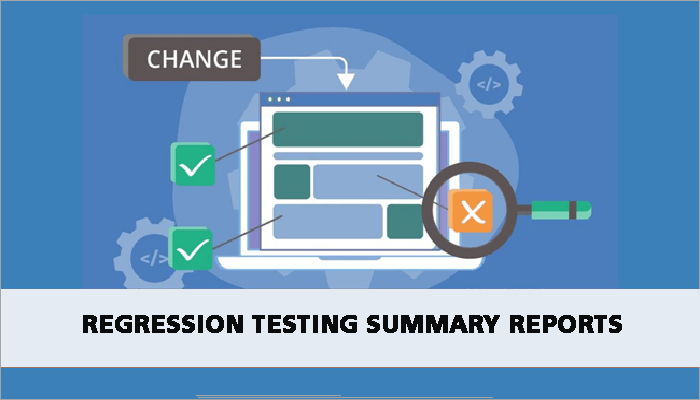Regression Testing Summary Reports: A Comprehensive Analysis

Introduction
In the fast-paced world of software development, regression testing plays a vital role in ensuring that changes or updates to an application do not introduce new defects or adversely impact existing functionality. With the complexity and size of software systems increasing rapidly, it has become essential to have an organized and structured approach to regression testing. One crucial component of this approach is the regression testing summary report. This article aims to explore the significance of regression testing summary reports, their key elements, and the benefits they offer in the software testing process.
Understanding Regression Testing Summary Reports
A regression testing summary report is a comprehensive document that provides a summary of the regression testing activities performed on a software application. It serves as a consolidated view of the regression test results and offers insights into the overall health of the application after changes or updates. The primary objective of the summary report is to communicate the findings and outcomes of the regression testing effort to various stakeholders, including project managers, developers, and testers.
Key Elements of a Regression Testing Summary Report
Test Coverage: The summary report should include information about the scope and coverage of the regression tests conducted. It should specify the areas of the application that were tested, including specific modules, functionalities, or user scenarios.
Test Execution Status: The report should provide details on the execution status of regression tests, such as the number of test cases executed, passed, failed, and blocked. It should also highlight any critical defects or issues encountered during the testing process.
Defect Analysis: A crucial aspect of the summary report is the analysis of defects identified during regression testing. It should include information about the severity and priority of the defects, along with their impact on the application’s functionality. This analysis helps stakeholders understand the areas of the application that require further attention and improvement.
Test Environment: The summary report should outline the test environment used for regression testing, including hardware configurations, software versions, and any specific tools or frameworks employed. This information ensures that the testing environment is well-documented and can be replicated in future regression cycles if needed.
Test Metrics: To provide a quantitative assessment of the regression testing effort, the summary report should include relevant test metrics. These metrics may include the test execution duration, the percentage of test cases passed, the defect density, and the overall test coverage achieved. These metrics offer insights into the effectiveness and efficiency of the regression testing process.
Benefits of Regression Testing Summary Reports
- Communication and Transparency: Regression testing summary reports facilitate effective communication between stakeholders by providing a clear and concise overview of the regression testing results. They ensure that all relevant parties are aware of the application’s status, the test coverage, and the identified defects. This transparency promotes collaboration and enables informed decision-making.
- Risk Assessment: The summary report helps assess the risks associated with the changes or updates made to the application. By highlighting critical defects and their impact, stakeholders can evaluate the potential risks to the application’s stability and functionality. This assessment aids in prioritizing and addressing the most significant risks promptly.
- Continuous Improvement: By analyzing the defect trends and test metrics presented in the summary report, organizations can identify areas for improvement in their regression testing strategy. It allows them to refine test cases, enhance test coverage, and optimize the overall regression testing process. This continuous improvement approach leads to higher software quality and reduces the likelihood of regression issues in future releases.
- Compliance and Audit: In regulated industries or organizations adhering to specific standards, regression testing summary reports serve as essential documentation for compliance and audit purposes. They provide evidence of the regression testing effort, ensuring that the necessary testing activities were performed and recorded in accordance with regulatory requirements.
Conclusion
Regression testing summary reports serve as invaluable tools for effectively managing and communicating the outcomes of regression testing efforts. They provide stakeholders with a comprehensive overview of the regression test results, highlighting the coverage, defects, and test metrics. By utilizing these reports, organizations can enhance communication, assess risks, drive continuous improvement, and fulfill compliance requirements. Regression testing summary reports are essential components of a robust software testing process, contributing to the delivery of high-quality software products.
Follow – https://xiaomiredminews.com for More Updates


